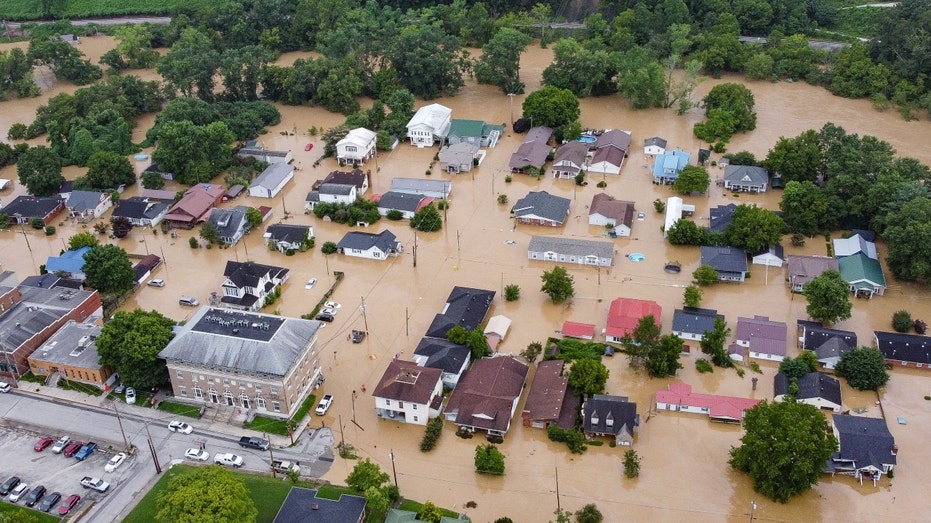Flood insurance: Why you should consider flood insurance during spring
Not all flood insurance plans cover the value of lost or destroyed items
California flooding seen in aerial footage
Aerial video published Tuesday shows flooding in California due to heavy rains. (@CA_DWR via Twitter)
Every American across the country should consider the benefits and risks of purchasing flooding insurance during the spring.
The two most common avenues to purchase flooding insurance is through private insurance companies with specific coverage guidelines and public insurance offered by FEMA through the National Flood Insurance Program.
Spring is the time of year when the most flooding occurs due to snow melting and sporadic weather conditions.
What is flood insurance?
One of the essential forms of protection that a homeowner can purchase is the coverage offered by flood insurance companies. Flood insurance provides financial backing to customers if they incur flooding on a piece of commercial or residential housing over a certain period of time. Before signing a plan, insurance companies will typically investigate the flood risks in the location of the property.
WHAT DOES FLOOD INSURANCE COVER?

Spring sees the most amount of flooding throughout the year due to quick snow melt and heavy rainfall. (Salgu Wissmath/San Francisco Chronicle via AP / AP Newsroom)
Lowlands, floodplains and other areas with an extensive history of floods will likely have higher premiums and other costs to receive full coverage. Moreover, insurance companies also only provide coverage for flood damage if it is caused directly by flooding. For instance, even if your house is flooded, but the direct cause of the damage is not from flooding, then insurance companies will likely not provide coverage.
The two most common types of flood insurance consist of building and content coverage. Each one of these plans either protects the overall structure or house, and the other provides coverage for items inside the property, such as furnaces, water heaters, carpeting, electrical systems and other personal items.
Why buy flood insurance during spring?
Throughout the year, spring is the most ideal time to purchase or have some form of flooding insurance, depending on the area or state that you're located in. Despite the warm weather, frozen land or snowfall does not seep into the ground and instead flows into water banks near urban and suburban residential areas.
HOW MUCH DOES FLOOD INSURANCE COST?
Additionally, snow melt and the occasional storm typically result in the highest period of flooding in the United States annually and life-threatening weather conditions. Heavy rain, severe weather and rapid snow melt are all stereotypical trends that occur during spring. Protection against these weather conditions can help ease the financial burden of flooding.

Flood insurance can help protect you from the financial costs of flood damage and other wealth disasters. (Photo by LEANDRO LOZADA / AFP / Getty Images)
Are there disadvantages of flood insurance?
As mentioned previously, insurance companies will often try to find loopholes in coverage plans to avoid having to cover the financial costs of flood damage on a property or residence. Even if your home was flooded, insurance companies might not offer coverage if a non-flooding-related issue was the direct cause of the event.
Not only that, but government-funded flood insurance from the National Flood Insurance Program managed by FEMA has specific drawbacks and limits that make the coverage absolute. For example, the government policy only provides cash value for your belongings lost in floods, but not the realistic replacement cost of the items. In those specific circumstances, flood insurance may not be worth the long-term cost.
GET FOX BUSINESS ON THE GO BY CLICKING HERE




















